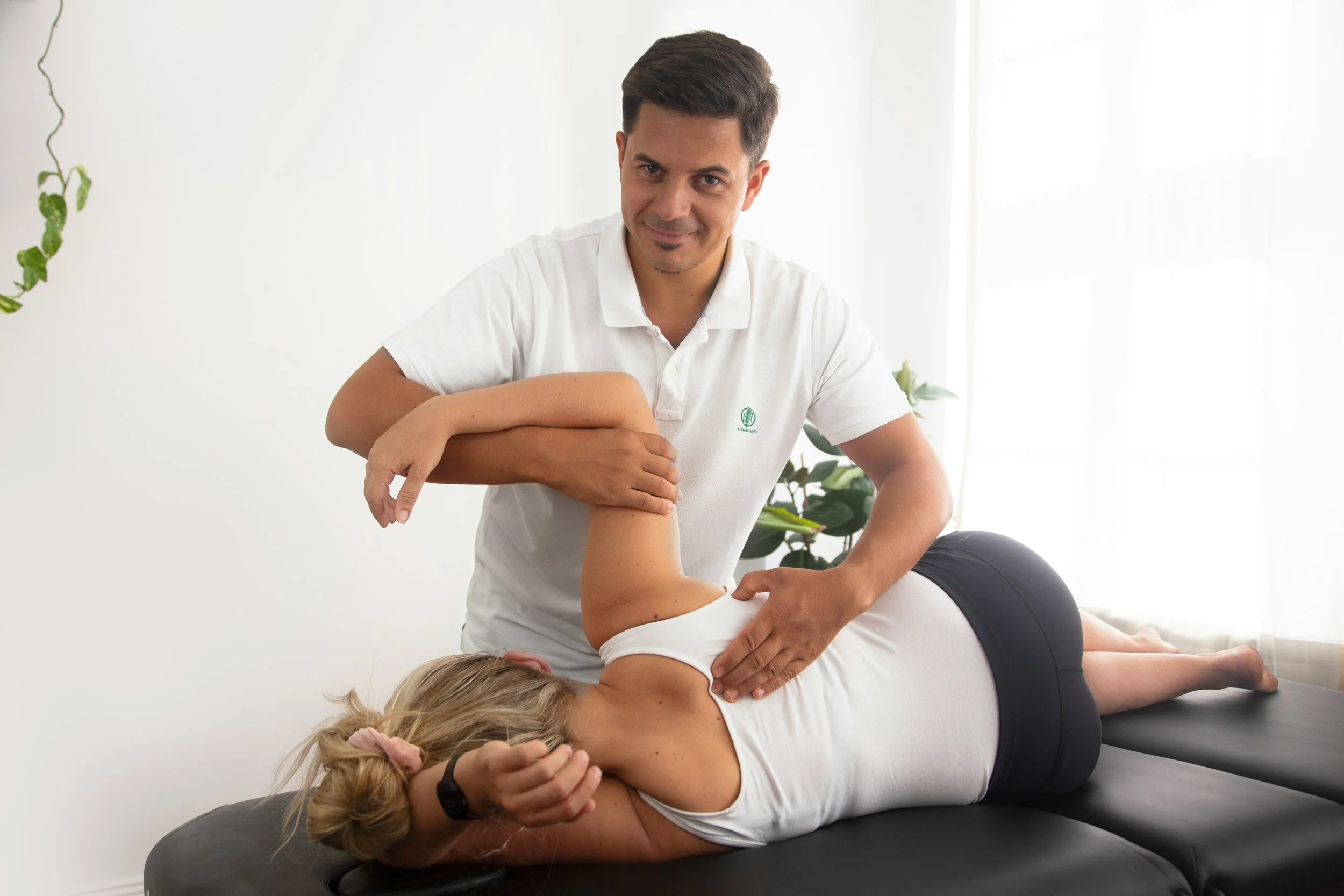Exploring Other Modalities for Brain Health
Gentle, Holistic Ways to Support Your Brain’s Healing
When it comes to brain health, most of us think about things like rest, hydration, and good nutrition — and those are absolutely key. But did you know there are also gentle, science-supported therapies that can help your brain and body heal on a deeper level?
Today, we’re exploring a few alternative therapies for brain health — craniosacral therapy, chiropractic care, and infrared light therapy. Each of these modalities can support recovery, relaxation, and nervous system balance in unique ways.
Let’s break them down simply and clearly so you can decide if any might be right for you or someone you love.
Craniosacral Therapy
What it is:
Craniosacral therapy (often called CST) is a light-touch, hands-on technique that focuses on the flow of cerebrospinal fluid — the fluid that cushions and nourishes your brain and spinal cord.
How it helps the brain:
During a session, a trained therapist uses very gentle pressure on the head, neck, and back to release tension in the connective tissue surrounding the brain and spinal cord. This can help:
Reduce headaches and migraines
Improve sleep and relaxation
Support the nervous system’s natural rhythm
It’s especially helpful for people recovering from concussions or brain injuries because it encourages deep relaxation and helps calm the overactive “fight or flight” response that often follows trauma.
Tip: Always work with a licensed craniosacral therapist who has experience with post-concussion care.
Chiropractic Care
What it is:
Chiropractic care focuses on the spine and nervous system. Because your spine protects the spinal cord — the communication highway between your brain and body — proper alignment can help everything function more efficiently.
How it helps the brain:
When your spine or neck is misaligned (which can happen from impact, poor posture, or tension), it can restrict blood flow and nerve communication. Gentle chiropractic adjustments can:
Improve neck mobility
Enhance brain-body communication
Relieve muscle tension and headaches
Some chiropractors also specialize in functional neurology, a field focused on retraining the brain and nervous system after injury.
Important: If you’ve had a recent concussion, avoid forceful or high-velocity neck adjustments — look for a chiropractor trained in gentle or neurological techniques.
Infrared Light Therapy (Photobiomodulation)
What it is:
Infrared light therapy — also known as red light therapy or photobiomodulation — uses specific wavelengths of light to stimulate cellular repair and reduce inflammation.
How it helps the brain:
When light penetrates your skin, it’s absorbed by your cells, increasing energy production and improving blood flow. In the brain, this can support:
Reduced inflammation
Faster cellular healing
Improved mental clarity and mood
Decreased headaches or fatigue
Research on infrared light therapy for concussion and brain injury is still growing, but early studies are promising. Many clinics use low-level laser therapy (LLLT) or LED helmets to deliver light directly to the head in a safe and non-invasive way.
Tip: Always make sure any device or treatment is FDA-cleared and done under professional supervision.
Integrating These Therapies Into Recovery
Every brain is unique — and so is every healing journey. These alternative therapies aren’t meant to replace medical care but to support it by helping your body find balance, calm, and connection again.
If you’re curious about exploring any of these, here’s how to start safely:
Consult your concussion specialist or neurologist first.
Start slow — one therapy at a time, to see how your brain responds.
Track your symptoms in a journal after each session.
Work with experienced, brain-informed practitioners.
If you’re not sure where to start, check out the Save A Brain Resource Center to find trusted providers who understand brain health and concussion recovery.
Caring for your brain means caring for your whole self — body, mind, and nervous system.
Therapies like craniosacral work, chiropractic care, and infrared light remind us that healing isn’t always about doing more — sometimes it’s about giving your body the right environment to rest and repair.


